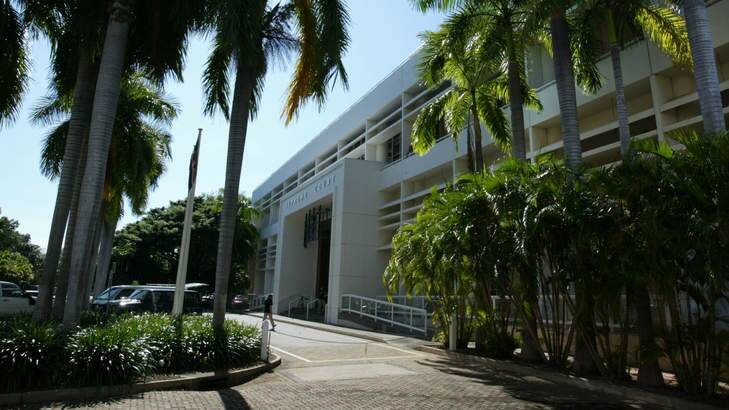I had occasion recently to make a quick visit to Darwin to attend the launch of a book about Cyclone Tracy written by a good friend, Dr Ella Stack, who was the first lord mayor of the City of Darwin. The book was launched at a social event hosted by the current lord mayor in a reception room next to the council meeting room. I also took the opportunity to visit family members who are commissioned officers serving in the army at the military barracks.
Subscribe now for unlimited access.
$0/
(min cost $0)
or signup to continue reading
Between these most enjoyable engagements I had sufficient time to visit the NT Parliament House and the Supreme Court, both of which make the equivalent ACT facilities look like poor relations. The parliamentary building is particularly impressive and is referred to locally as the ''wedding cake''.

It has a total floor area of 23,000 square metres on six levels, and incorporates the Legislative Assembly chamber, ministerial and opposition offices, independent and backbench offices, parliamentary counsel, media facilities, a cafe, a craft shop and the NT library.
The chamber itself presently provides for 25 elected members with room for more in the future, and has three galleries for visitors as well as the press gallery behind and above the Speaker's chair. There is also a formal function venue, with a high-quality granite floor, which can accommodate up to 1000 guests.
The nearby Supreme Court is also impressive with ample space for seven permanent NT judges and two Federal Court judges who can also serve on the NT bench when required. In the same building there are offices for staff of the sheriff in addition to the court rooms and judges chambers.
As well as these outstanding facilities, the NT has a very dynamic structure of local government comprising five municipalities and 11 shire councils. The elected members of each of these bodies are paid reasonable fees and allowances for expenses. The mayors and shire presidents are generally regarded as full-time officers and are paid handsomely.
Furthermore, the NT has an administrator (who is equivalent to a state governor) and a well-staffed Government House which is the residence of the administrator and is also used for meetings with interstate and overseas dignitaries when they visit the territory.
Comparisons between the NT and the ACT are fraught with difficulty because of the enormous differences in geography, social problems and the political timing of self government, but when one bears in mind that the total population of the NT is only 60 per cent the size of the ACT population it seems reasonable to conclude that we in the ACT did not get such a good deal from the Commonwealth government when we were eventually granted self government.
I do not have the capacity or the resources to do the necessary research, but I think that it would be a useful exercise for someone to work out the total costs of all government services to the residents of both the NT and the ACT, and also to calculate the total number of personnel employed to provide for these services. Perhaps the Productivity Commission could do the sums.
My guess would be that the ACT is not just a poor relation, but is very significantly impoverished compared with our northern neighbour, and the costs per NT resident could well be several times the equivalent costs in the ACT.
While both the Commonwealth and ACT governments are carrying serious deficits, this is obviously not the right time to suggest that more should be spent on the provision of government services. I would nevertheless encourage an in-depth discussion of these issues. Do we need, for example, a larger Legislative Assembly, a larger judiciary, a more participatory arrangement for local government, our own administrator and Government House ?
And the questions will become even more challenging when the population of the ACT passes the population of Tasmania (perhaps in the next 10 or 15 years) and when the NT is eventually granted the status of a fully-fledged state that it has been seeking for many years and will therefore be entitled to the full quota of senators. What will be the status and political structure of the ACT at that time?
In response to two readers who independently of each other have suggested that I was wrong in a piece published on May 17 when I said that the ACT jail was full and that urgent action was needed to solve the problem: they were both right, and I apologise for my mistake.
I based my view on a news item of May 8 which appeared under the heading ''Sentencing inquiring as jail hits capacity'' which over-stated the problem. I clearly should have checked the numbers before writing the article. The most recent figures that I have seen indicate that the daily average number of prisoners was 265, still under the official capacity of 300, but perilously close to the effective operating capacity which must take into account that many different types of prisoners and is thought to require a margin of between 10 and 15 per cent.
There are times like this when a quotation from Winston Churchill can provide some comfort: ''It is no part of my argument that I have never made a mistake.''
- David Biles is consultant criminologist in Canberra. Email: biles@netspeed.com.au

